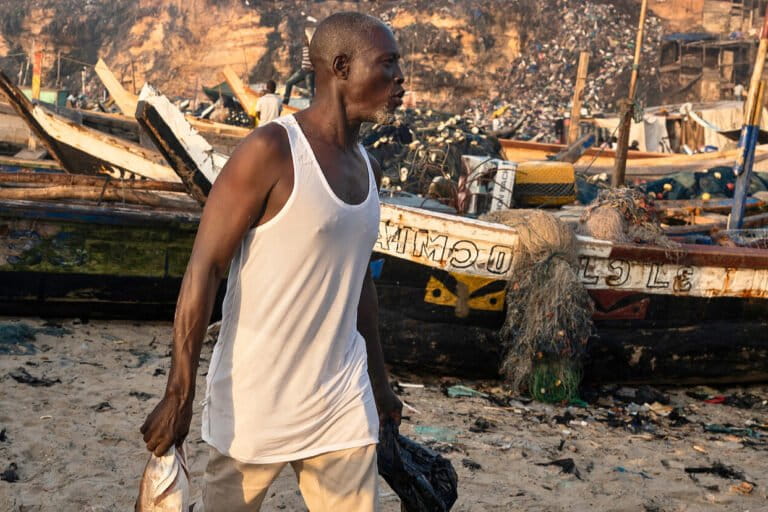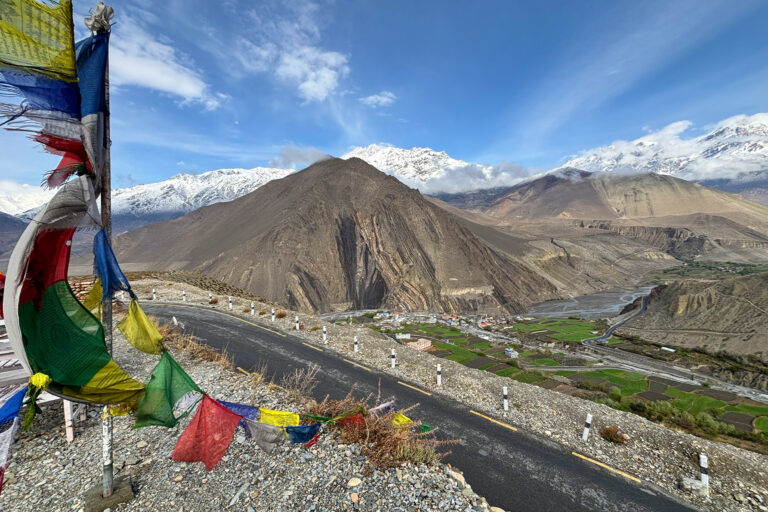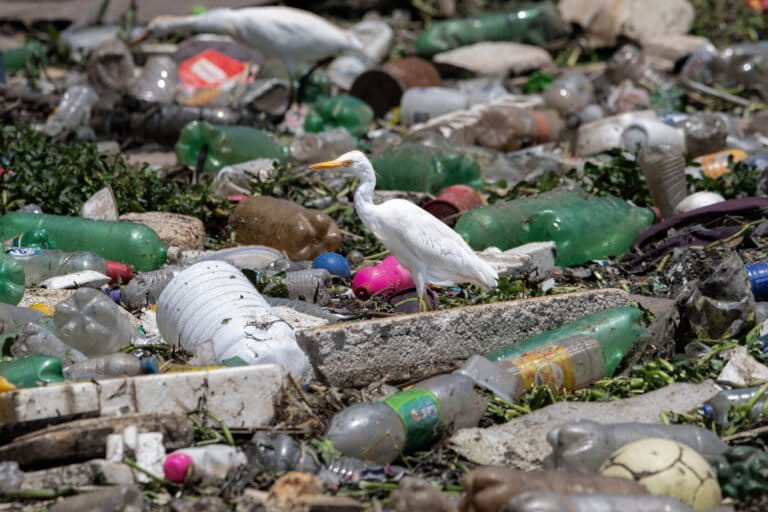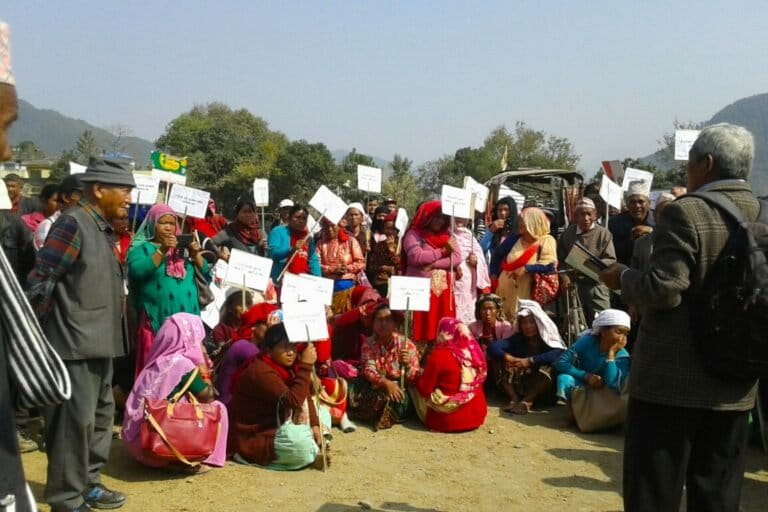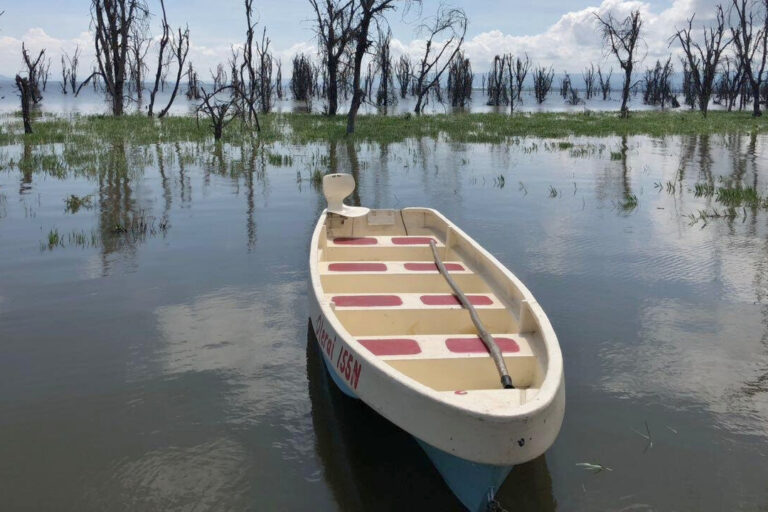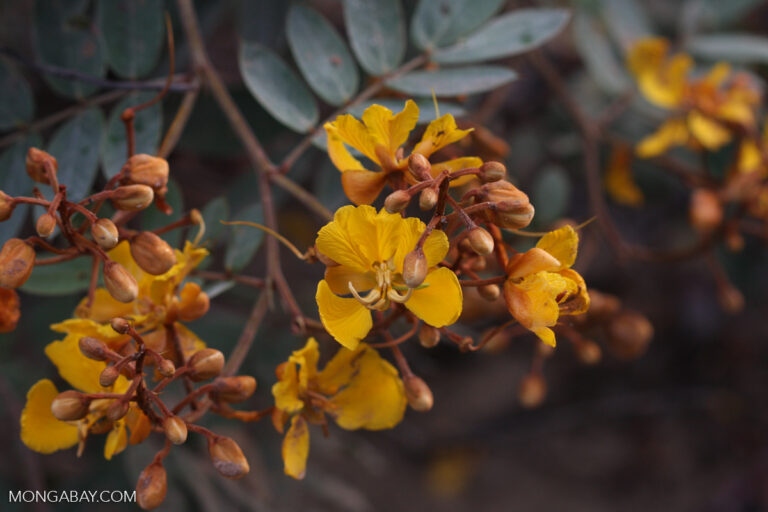- In only 50 years, between 1950 and 2000, the area lost to logging in Guatemala is about the size of Holland.
- GuateCarbón has developed a “community forest model” within a third of the Maya Biosphere, the largest reserve north of the Amazon region that has an extension of 8,400 square miles.
- The origin of REDD dates back to 1988, when Guatemala became the world’s first experimental field project.

In a local indigenous language, Guatemala means “land of many trees”. However, today only 34.7% of its territory is still covered with canopy. In only 50 years, between 1950 and 2000, the area lost to logging has grown to the land size of Holland. Deforestation is still rampant in the largest, northernmost and most tropical region: Petén.
There, in Petén, the GuateCarbón program is meant to slow down deforestation throughout the world’s tropical forests.
“We’re looking to mitigate emissions and the effects of greenhouse gases through a REDD+ mechanism,” explains Sergio Guzmán, the project manager. The initiative was started in 2012 and for 30 years, it will bring together Guatemala’s government and 23 communities, some of them indigenous and all of them under the umbrella of the Association of Forest Communities of Petén, or ACOFOP.
REDD+ stands for “Reducing Emissions from Deforestation and Forest Degradation”; a mechanism that emerged in 2007 during the U.N. climate talks in Bali (COP13) in order to encourage developing countries like Guatemala to protect their forests. GuateCarbón started with financial support from the U.S. government, through USAID.
Guzmán explains that GuateCarbón has developed a “community forest model” within a third of the Maya Biosphere, the largest reserve north of the Amazon region that has an extension of 8,400 square miles. Around 1,400 people, peasants and indigenous alike, can extract natural resources from those forests in an orderly way, with counseling from the conservation NGO, Rainforest Alliance.
Currently, GuateCarbón has around one million tons of carbon available for trading. According to the program, each ton can be sold for $5.40 to socially and environmentally responsible companies. However, the GuateCarbón manager explains that “no one has bought [the credits] because we don’t have them yet; the process that guarantees them is long and strict, and we haven’t wanted to make any advance commitments.”
Five years ago, the American company Global Carbon Group said it was going to commit more than $400,000 to mitigate the emission of 1.2 million tons of greenhouse gases over the course of 20 years. However, Guzmán explains that the company didn’t end up making the investment; they analyzed forested areas outside of the GuateCarbón area and decided the startup costs would be too great.
Three months ago, Guzmán was in Paris for COP21. There, GuateCarbón was presented to the public as a “successful program”, and a deal was signed to start selling carbon credits in the international market.
Until now, GuateCarbón has functioned with subsidies from partner organizations, the government, and communities; money that has been invested in infrastructure development, schools, health centers, sustainable forest management, small business support, and patrols.
Benedicto Lucas, executive secretary of CONAP (National Council of Protected Areas) praises the program: “Out of Guatemala’s 30 protected areas, very few are able to support themselves. For the government, investment in the rural sectors is very important, and GuateCarbón helps us meet this goal. It can balance our environmental, economic, and social needs. It guarantees sustainable development; it’s innovative.”
Whether it’s innovative or not is up for debate. The origin of REDD dates back to 1988, when Guatemala became the world’s first experimental field project. On that year, the American energy company AES (Applied Energy Services) was building an 183-megawatt electric plant in Connecticut that used coal. In order to make up for the 14.1 million tons of CO2 over the next 40 years, it signed a deal with the NGO CARE to jumpstart a primary forest conservation project in Guatemala.
According to the World Rainforest Movement, an international NGO that defends tropical forests: “They were looking for a developing country because the alternatives back in the U.S. were much more expensive.”

Besides GuateCarbón, a few other projects that use the REDD+ mechanism have emerged in Petén. In the south, there is the Laguna Lachuá National Park: Fundalachuá, which involves 55 communities of 18,500 Mayan people.
In the northwest, on the edges of the Sierra del Lacandón National Park, where the Usumacinta River meets the Mexican state of Chiapas, the Defenders of Nature Foundation and OroVerde are working on 644 hectares of “private” forests. Here, families take care of the trees and even have the space to plant new timber species that are most in demand: ramón (Brosimum alicastrum), pimienta (Pimenta dioica), cedro (Cedrela odorata) and caoba (Swietenia macrophylla).
However, Edín López, the leader of Nature Defenders Foundation (Fundación Defensores de la Naturaleza) reveals that these REDD projects haven’t been able to be replicated elsewhere because they require such high startup costs. “You have to pay a foreign company to certify you; someone has to count the trees in each hectare, map the area via GPS, and let time pass in order to make the necessary comparative studies.” In theory, it can cost the same amount to certify a small or a large lot –between $25,000 and $30,000, every five years.
On the other side of the Usumacinta River −on its Mexican shores, where the Lacandona forest deepens−-, the REDD+ projects have been controversial since they first started in 2011. A year since the deal was signed, Greenpeace described REDD+ as having “deepened a historic land conflict between the Choles, Tzeltales, Tojolabales and Tzotziles indigenous peoples.” These groups have gone from being “ancestral owners” of the forest, to being considered “invaders” by the community members who got certified with REDD+. Many of the diplaced indigenous peoples were not local, but had settled there without documents during the Zapatista conflict that took place between 1984 and 1994.
Octavio Rosas Landa of Mexico’s Autonomous University explains that the forest shared by Mexico and Guatemala is often subject to drastic changes due to deforestation, population growth, and climate change itself.
“If the forests are not saved; if they are logged or fail to capture the estimated carbon stocks, the company that subsidizes this program could end up blaming the community for it, and even having them pay back the debt”, argued Rosas Landa.

Sergio Guzmán, director of GuateCarbón, is confident that REDD+ has had better results than the fenced off forest reserves that were common in the eighties. The Guatemalan government also praises the program, saying that last year they saw a drop in deforestation of as much as 50%, based on the Land Use Changes Map, 2001-2010.
However, Juventino Gálvez, director of the Agriculture, Natural Resources and Environment Institute (IARNA) at Guatemala’s Rafael Landívar Univesity, thinks the deforestation results represent a misinterpretation of the available data.
Gálvez believes that the direct causes of deforestation haven’t changed –and have probably grown worse– since deforestation in Guatemala has gone from almost 400 square miles between 2001 and 2006, to more than 500 square miles between 2006 and 2010. These calculations make Guatemala’s deforestation rate one of the highest in Latin America, at about 3.4 percent.
There is more data that backs up Gálvez’s claim. According to the last official study, “Forest Dynamics in Guatemala”, Petén is the region with the greatest forest loss in the last few years.
Byron Castellanos, director of the conservation nonprofit, Asociación Balám, thinks that starting in 2014, deforestation peaked because the state hadn’t done anything to address the greatest threats to forests: species trafficking, the looting of archaeological sites, land-grabbing, and the illegal sale of territories.
The way Castellanos sees it, the future isn’t very bright: the new government has reduced the country’s conservation budget from $14 to $12 million a year.
“The CONAP (National Council of Protected Areas) has now been weakened and cannot enforce the law. The tragedy is that if there was a wildfire in the Maya Biosphere Reserve, for example, this would be a major strike against the government, and as a result, against programs like REDD+.”
With or without REDD+, forest conservation in Guatemala is still on tenterhooks, and wrapped up in controversy.







